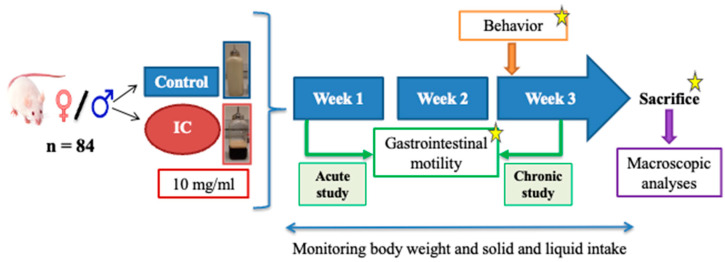Figure 1.
Experimental protocol. All rats were exposed to water (control group) or instant cascara (IC) beverage for 3 weeks, independently of the cohort of animals to which they were allocated. During the 3 weeks, body weight and food and drink intakes were regularly monitored. During the third week, different behavior assays were performed to analyze anhedonia (splash test, cohort 1), exploratory behavior (hole board test, cohort 1), and anxiety (plus maze test, cohort 2). Two radiographic motility studies were performed: after one day of IC beverage exposure (acute study, cohort 2) and after 3 weeks of IC beverage exposure (chronic study, cohort 1). At the end of the third week, animals were sacrificed, and a macroscopic analysis of the gastrointestinal organs was performed (cohort 1). The star represents the vaginal cytological smear evaluations performed to determine the phase of the estrous cycle in females in the indicated studies.

